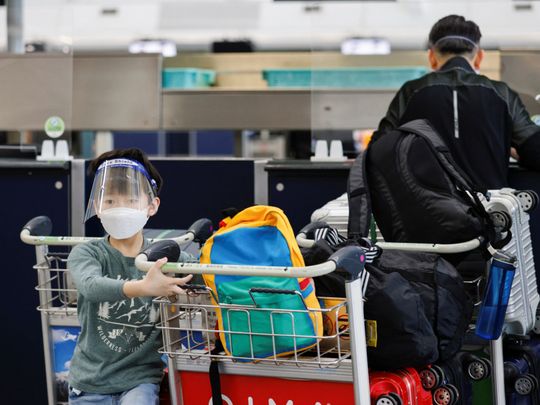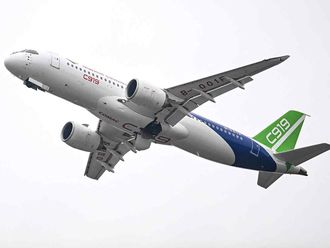
Hong Kong: Hong Kong airport will allow transit passengers for the first time in three months, building on the wider relaxation of strict COVID-19 border controls in the Asian financial hub.
Airlines were informed that transit passengers from so-called group A “high-risk” countries will be allowed to transfer through Hong Kong airport from next month, according to a letter dated March 22 seen by Bloomberg News.
Airport Authority Hong Kong, which runs the city’s airport, didn’t immediately respond to a request for comment.
Hong Kong laid out broader changes to travel rules on Monday as part of the city’s wider shift in its approach to Covid. Those include halving hotel quarantine time for travelers to seven days from 14, and ending the flight ban on nine countries including the US, UK, and Australia. Risk profiles for countries, currently from ranked A to C, will also be abolished.
The ban had meant people from all countries except China and Taiwan weren’t allowed to transfer through Hong Kong, one of Asia’s premier airport transit hubs in pre-pandemic times.
Strict border controls, including up to three weeks’ quarantine, has left Cathay Pacific Airways Ltd. dependent on transit travelers to prop up its Covid-ravaged passenger flight operations.
An academic study, meanwhile, said the full reopening of international travel in Hong Kong will have “little marginal impact” on the spread of COVID-19.
The study, titled “Forward planning, after HK’s fifth wave of Omicron BA.2”, expects a sixth wave to begin in June as measures to control the spread of the disease are relaxed in the months ahead and the city increases vaccination rates.
As long as arrivals are fully vaccinated and test negative upon boarding a flight to the Chinese-ruled territory, they would have a negligible impact, according to experts from the University of Hong Kong, the World Health Organization and the Laboratory of Data Discovery for Health.
The researchers suggested the best strategy for the Hong Kong government going forward was a “controlled transition ... sooner rather than later” to living with the disease in society.
Authorities in Hong Kong and China have stuck to “dynamic zero” policy, seeking to curb outbreaks as soon as they occur by extensive contact tracing, testing and isolation.
However, since February the former British colony has struggled to cope as infections and deaths soared.
14,152 new cases
Leader Carrie Lam said on Monday that Hong Kong would ease some social-distancing measures in April, including lifting a ban on flights from nine countries, after a backlash over the city’s strict measures at a time when the rest of the world was shifting to living with the virus.
Since the pandemic began in 2020, Hong Kong has recorded more than 1 million infections and more than 6,000 deaths - most of them in the past month. More than half of Hong Kong’s population has already been infected, researchers said.
Health authorities reported 14,152 new coronavirus infections on Tuesday and 245 deaths.
The study said a transition towards allowing the disease to be endemic would expose the 40% or so of the population who are not yet infected in a controlled manner, which could develop “hybrid immunity” through a combination of natural infection and vaccinations.
At least 90% of those aged over 70 would need to have at least two vaccination doses, up from about 70% now, it said.
On the assumption that social-distancing measures are fully relaxed by June 1, a sixth wave of the disease would emerge and last for two months.
By June 30, the cumulative number of infections would be about 6.7 million, with the cumulative number of deaths up to 10,882.












